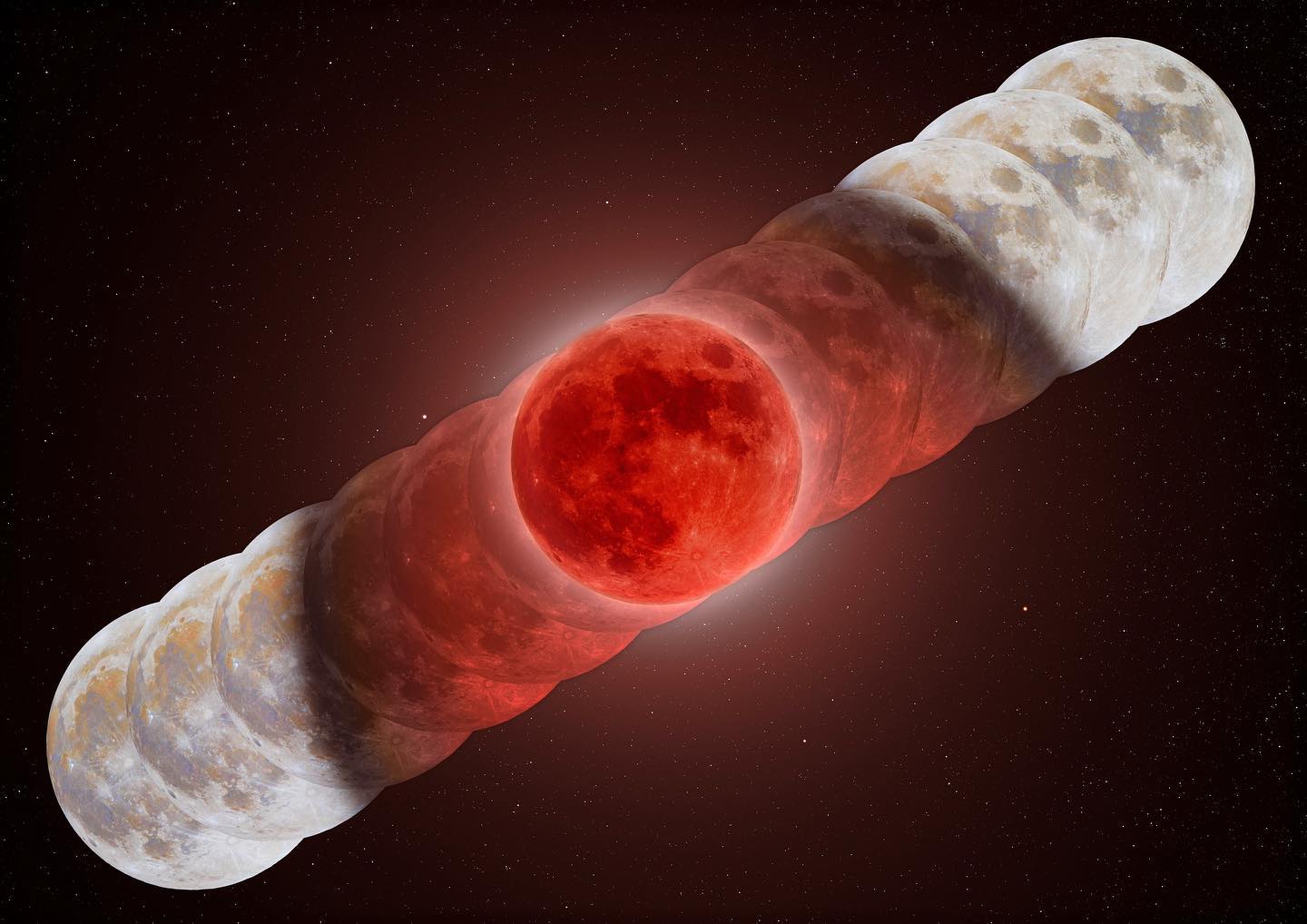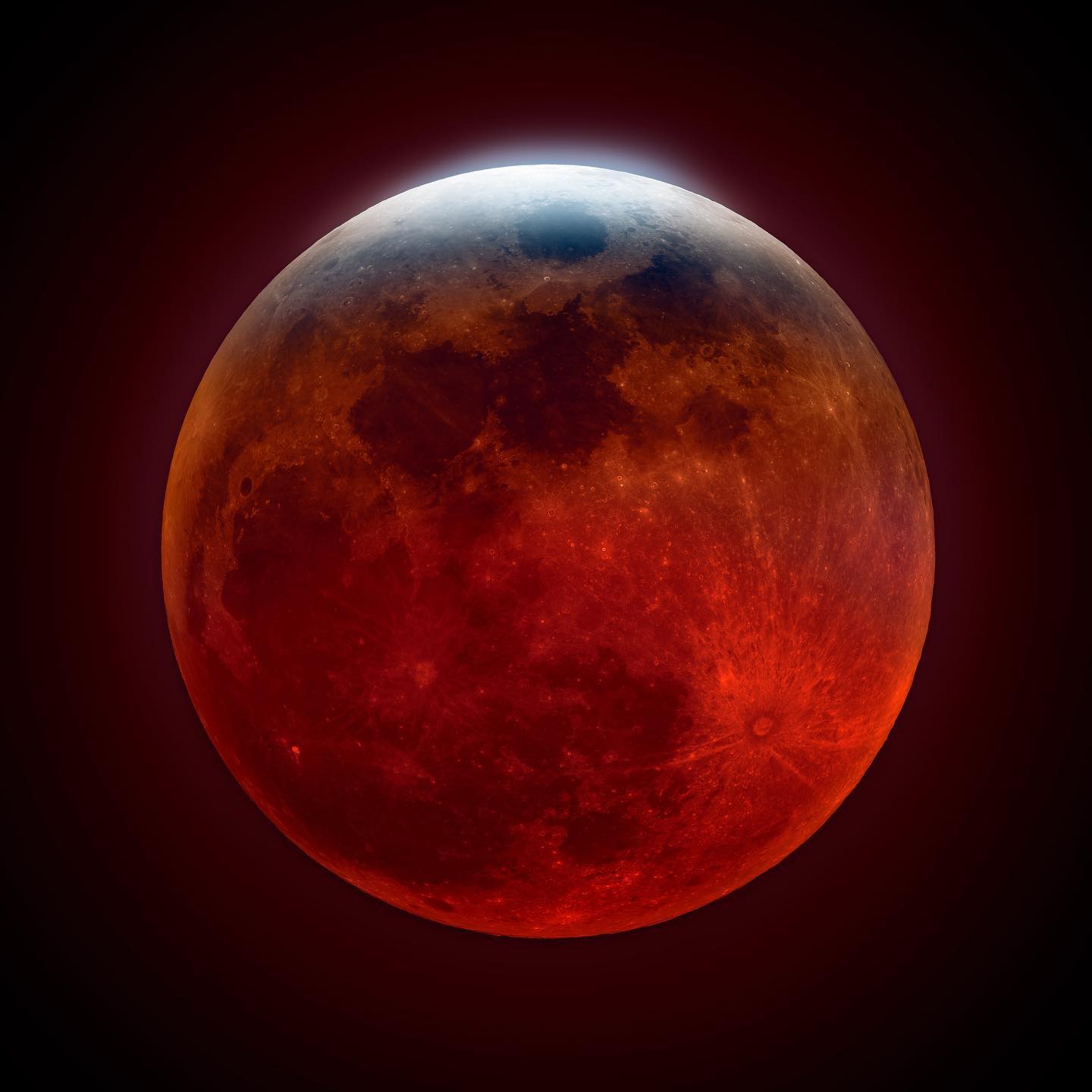Lunar eclipses typically happen just once or twice a year.
The event happens when the Moon moves into the Earth’s shadow.
When everything comes together for a full lunar eclipse, it’s magic.

As McCarthy’s composite image shows, the Moon turns a mottled red-orange when in complete totality.
This is because the Moon relies on the reflection of the Sun’s rays to shine.
With those rays covered up, its characteristic glow is gone.

In its place, we see the rusty-colored hue because of indirect sunlight.
Every lunar eclipse, I hang out with my camera and watch the event with binoculars, hewrites.
Usually the visual experience, while incredible, isn’t very colorful.
This eclipse was somehow the exception, burning with a deep red with more saturation visually than past events.
Both images are available for purchase viaMcCarthy’s website.
And you could follow along onInstagramto see more of hisastrophotography.